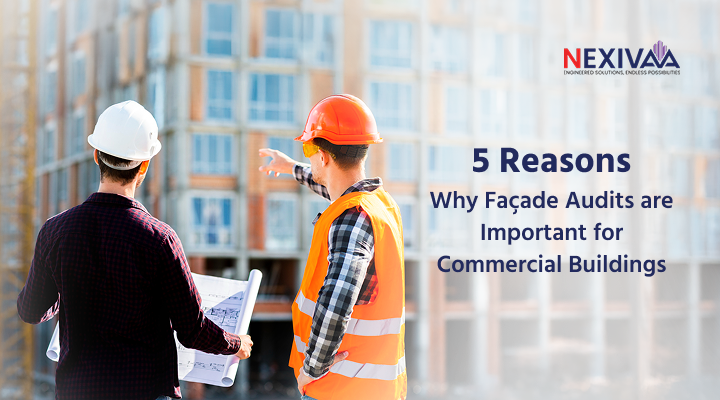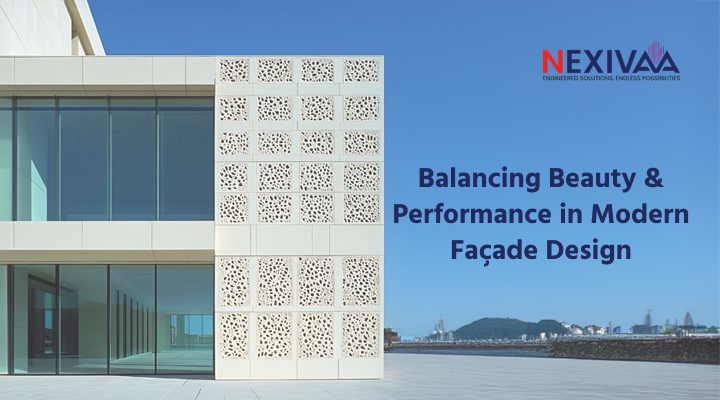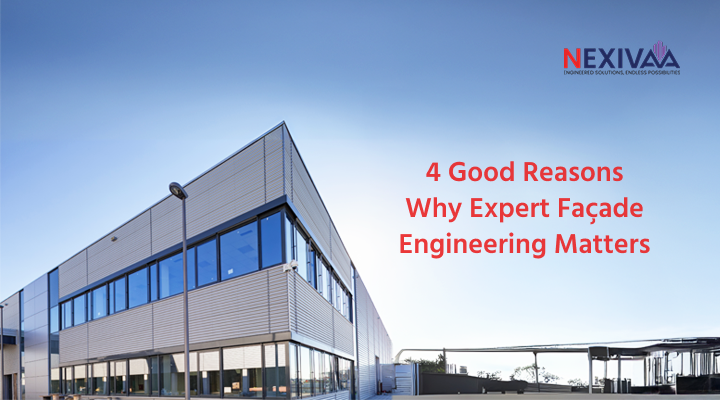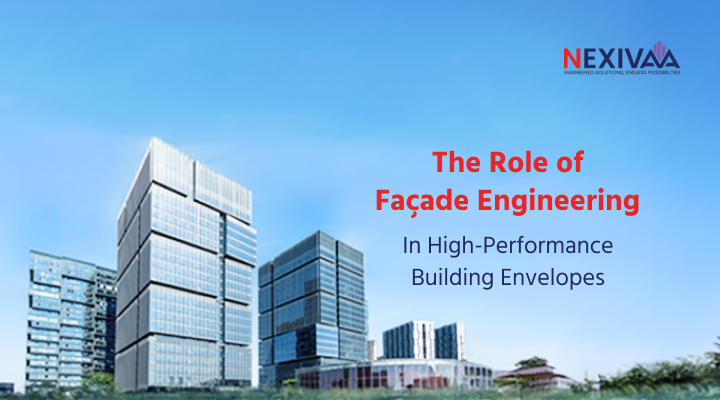When considering the appearance and performance of a commercial building, the façade often takes center stage. It is not just the face of the structure but a critical component that influences safety, energy efficiency, and long-term value. Over time, even the most impressive commercial building façade design can deteriorate due to environmental factors, material aging, or poor maintenance. This is where façade audits step in as a vital process for building owners and facility managers.
What is a Façade Audit?
A façade audit is a detailed assessment of a building’s external envelope to evaluate its structural integrity, identify safety hazards, and ensure compliance with relevant regulations. For existing buildings, this process identifies defects such as cracks, loose panels, water leakage, and thermal inefficiencies. A façade audit not only helps prevent accidents but also ensures that modern commercial façade designs continue to perform optimally over time.
Why Façade Audits Are Crucial for Commercial Buildings
1. Ensuring safety
Public safety is the foremost reason for conducting façade audits. Over the years, elements of a building’s exterior may loosen or weaken due to weather exposure, temperature changes, or natural wear and tear. In areas with high foot traffic, a minor façade failure could lead to serious accidents. Regular audits ensure that the commercial building façade design remains structurally sound and secure.
2. Preserving Building Value
A well-maintained façade has a direct impact on a property’s market value. If the façade is neglected, it can diminish the overall appearance of the building, resulting in reduced rental yields and a lower resale value. For property managers and owners, a façade audit serves as an investment in the building’s longevity and financial performance. In particular, a modern commercial façade design requires proper upkeep to retain its original aesthetic appeal and premium finish.
3. Meeting Regulatory Requirements
Many cities and regions have specific regulations that mandate periodic façade inspections for older commercial properties. Failing to comply with these rules can result in hefty fines or legal complications. A professional façade audit ensures that your commercial building façade design meets all local and national building codes.
4. Improving Energy Efficiency
The façade is a major contributor to a building’s thermal performance. Poor insulation, air leaks, or damaged glazing can lead to increased energy consumption for heating and cooling. A façade audit identifies these weaknesses, allowing corrective measures to be taken. For buildings with a modern commercial façade design, this process ensures that innovative energy-saving features continue to deliver the intended benefits.
5. Protecting Against Water Damage
Water infiltration is one of the most common problems identified during façade audits. It can lead to corrosion, mold growth, and structural deterioration. By detecting and addressing water ingress early, building owners can avoid costly repairs and extend the lifespan of their façade systems.
The Process of a Façade Audit
A professional façade audit follows a systematic approach to ensure thorough inspection and accurate reporting.
1. Visual Examination
Inspectors conduct a close-up visual check, often using rope access, drones, or scaffolding to examine every part of the façade.
2. Material Testing
Samples may be taken to test material strength, durability, and compliance with specifications.
3. Thermal Imaging
Infrared technology helps identify insulation gaps, moisture intrusion, and energy leakage.
4. Structural Assessment
Engineers review the load-bearing capacity and stability of façade components.
5. Documentation and Reporting
The audit concludes with a comprehensive report that outlines defects, potential hazards, and recommends corrective actions.
How Often Should Façade Audits Be Done?
While local regulations may dictate specific timelines, most experts recommend a façade audit every 5 years for commercial properties. However, buildings with complex or modern commercial façade designs may require more frequent checks due to the variety of materials and systems involved. Environmental factors, such as coastal winds, high rainfall, or extreme temperatures, can also accelerate wear, making regular audits even more crucial.
The Financial Benefits of Regular Façade Audits
At first glance, a façade audit might seem like an additional expense. However, it can save building owners significant costs in the long run. Preventive maintenance identified through audits is always more cost-effective than large-scale emergency repairs. Furthermore, maintaining a pristine commercial building façade design can attract higher-quality tenants, reduce vacancy rates, and justify premium rental pricing.
Trends in Modern Façade Maintenance
With the evolution of materials and technology, maintaining façades has become more sophisticated. For instance:
- Smart Glass and Shading Systems
Require periodic calibration and cleaning to ensure optimal performance. - High-Performance Cladding
Requires specialist inspections to identify micro-damages that are not visible to the naked eye. - Integrated Photovoltaic Panels
Must be checked for electrical safety and efficiency. These advancements make it even more essential to have regular audits, particularly for properties with modern commercial façade design elements.
Common Issues Identified in Façade Audits
- Cracked or broken cladding panels
- Loose fixings or anchoring systems
- Sealant deterioration around windows and joints
- Corrosion of metallic elements
- Stains and discoloration due to pollution or water exposure
- Thermal bridging and insulation failures
Addressing these problems promptly helps maintain both the safety and the visual appeal of the building.
Why Choose Us for Façade and Fenestration Consultation
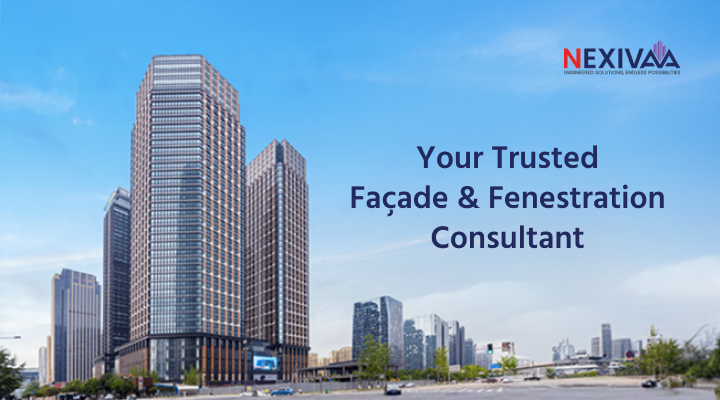
At Nexivaa, we believe a façade audit is not just about maintenance; it is about protecting safety, enhancing performance, and preserving long-term investment value. When you partner with us, you benefit from:
- Precise, timely, and customized solutions that respect the architectural intent of your project.
- A team of globally experienced engineers with deep expertise in façade and fenestration systems.
- Performance-driven approach that optimizes safety, energy efficiency, and sustainability.
- End-to-end support from initial assessment to practical, results-oriented solutions.
We ensure that your commercial building façade design, whether modern or traditional, remains visually striking, structurally sound, and compliant with the highest industry standards.
FAQs
1. What types of buildings require façade audits?
Façade audits are essential for all types of buildings, including commercial, institutional, and high-rise residential structures. Any property with an external envelope exposed to environmental elements can benefit from regular audits.
2. How long does a façade audit usually take?
The duration depends on the size, height, and complexity of the building. A small commercial property may take a couple of days, while a large high-rise building may require several weeks for a thorough inspection.
3. Who is qualified to perform a façade audit?
Façade audits should be carried out by licensed engineers or façade consultants with expertise in structural assessment, building envelope systems, and safety compliance.
4. Can façade audits be done without disrupting building operations?
Yes. Most façade audits are designed to cause minimal disruption to occupants. Techniques like rope access, drones, and scheduled inspections outside peak hours help maintain business continuity.
5. What happens if a façade audit reveals serious defects?
If critical safety hazards are found, the consultant will recommend immediate remedial measures, which may include temporary barriers, repairs, or partial closures until the issue is resolved.
6. Are façade audits different for older buildings compared to newer ones?
Yes. Older buildings often require more detailed inspections due to material aging, outdated construction techniques, and possible lack of prior maintenance. In comparison, newer buildings focus more on performance optimization and compliance verification.
